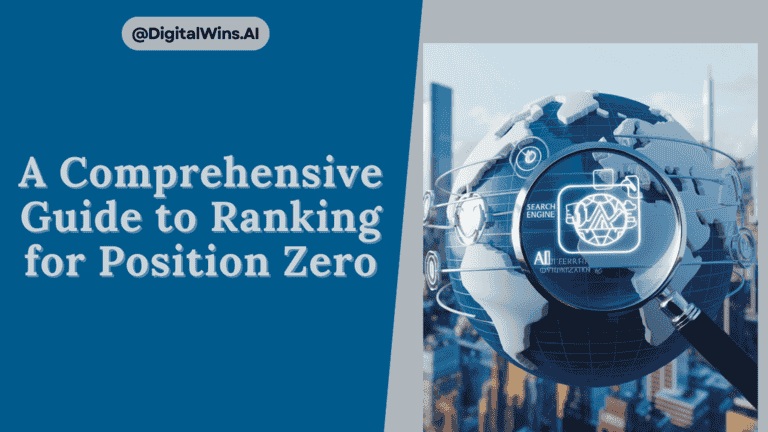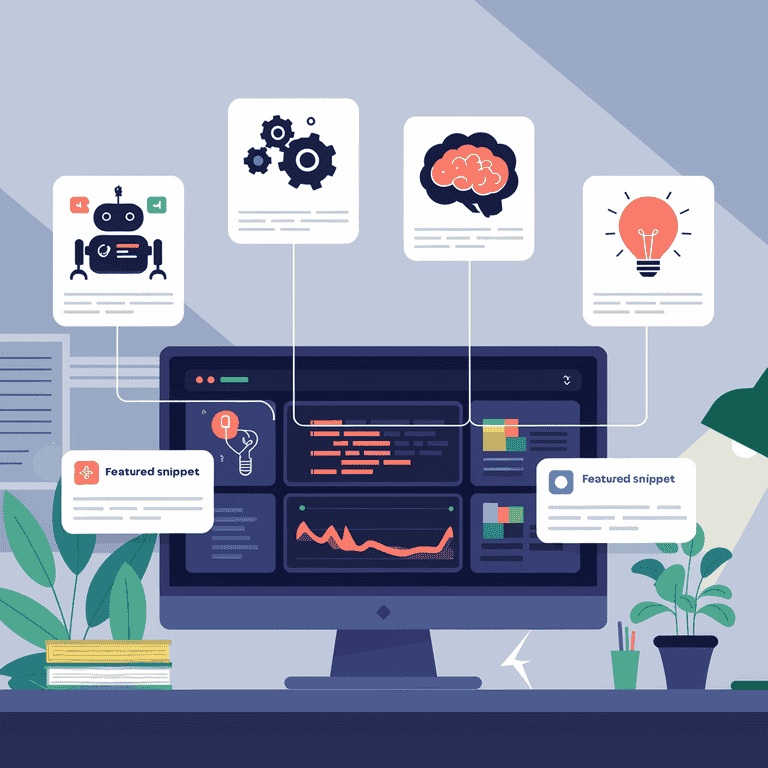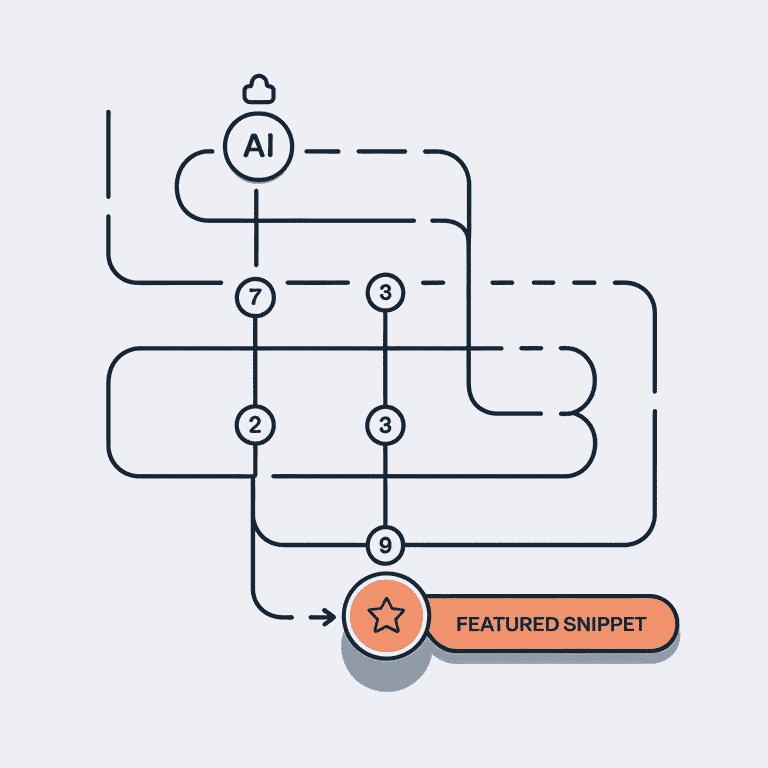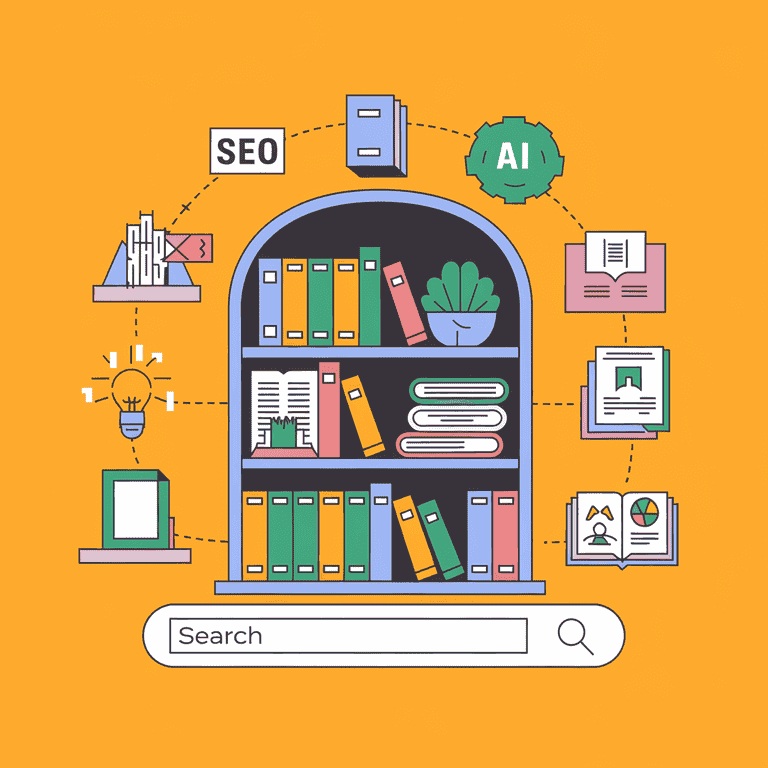Overview of Featured Snippets
Featured snippets have become crucial to search engine results, giving users quick, concise answers to their queries. These snippets, often called “position zero,” appear above traditional organic listings at the top of Google search results. Ranking here can dramatically increase click-through rates (CTR) and elevate brand authority, as users are more likely to trust the information presented in a featured snippet.

Role of AI in Featured Snippets Optimization
Artificial Intelligence (AI) has transformed SEO, and its ability to streamline the optimization process for featured snippets is no exception. AI-powered tools help identify search intent, craft concise answers, and create snippet-friendly content. By effectively leveraging AI, businesses can significantly improve their chances of being featured in position zero.
What Are Featured Snippets?
Types of Featured Snippets
Featured snippets can take various forms, each designed to provide the most relevant answer to a user’s query. These include:
Paragraph Snippets
- These are the most common types of featured snippets. In paragraph form, Google pulls a concise answer from a webpage to answer the user’s query directly.
List Snippets (Bulleted and Numbered)
- Google presents information as a bulleted or numbered list. This format is often used for “how-to” guides, step-by-step instructions, or lists of items.
Table Snippets
- For queries requiring comparison or data presentation, Google uses a table format, pulling structured data from a webpage to provide users with easily digestible information.
Video Snippets
- Google sometimes features videos as snippets, particularly for how-to content or visual instructions, by pulling relevant sections of a video hosted on platforms like YouTube.
Importance of Ranking for Featured Snippets
Ranking for a featured snippet can significantly impact a business’s SEO performance. Here’s why:
- Increased Visibility: Position zero offers a prime spot in search results, leading to more exposure.
- Higher Click-Through Rates: Users often click the featured snippet first, giving it a competitive advantage over traditional search results.
- Brand Authority: Appearing in a featured snippet signals to users that Google trusts your website to provide the best answer to their queries.
Search Intent and Featured Snippets
One critical factor in being selected for a featured snippet is aligning your content with search intent. Google aims to provide users with the most relevant and helpful information for their queries. Therefore, understanding and optimizing for the type of questions users ask is crucial.
Aligning Content with User Intent
- Informational Queries: These are the most common queries that result in featured snippets. Users want a quick answer, such as definitions or brief explanations.
- How-To Queries: For step-by-step guides, optimizing for list snippets is effective.
By structuring content to answer user questions directly, you increase the chances of your content being featured.

How AI Enhances Featured Snippets Optimization
AI’s Role in Understanding Search Queries
Artificial Intelligence is critical in interpreting and analyzing search queries, mainly through Natural Language Processing (NLP). NLP allows AI to understand the keywords and intent behind a user’s query. This is crucial for featured snippets, as the correct answer must match the user’s intent perfectly.
Natural Language Processing (NLP) for Search Intent
- AI and NLP can identify user behavior patterns and queries to understand better what kind of content will most likely be featured as a snippet.
- AI tools can analyze search queries and predict what structure and answer format Google will favor for featured snippets.
AI Tools for Identifying Snippet-Worthy Queries
- AI-powered SEO tools such as SEMrush and Ahrefs can analyze the featured snippets for specific keywords and show which types of questions Google tends to reward with snippets.
- These tools can help you optimize your content for the correct query by showing the most common formats (paragraph, list, etc.) used for similar keywords.
Using AI to Analyze Competitors’ Snippets
AI can also gain an edge over competitors by analyzing which of their content is currently featured in snippets and how to outperform it.
Identifying Snippet Opportunities in Competitor Content
- AI-driven tools can crawl competitor websites and identify the content that ranks in snippets. By understanding how your competitors are structured for these snippets, you can adjust your content to be more competitive.
Learning from Competitors’ Ranking Snippets
- Once AI tools identify the snippets your competitors are winning, you can analyze what makes their content snippet-worthy. Their answers may be more concise, or their headings may be more precise. AI tools can help you adjust your content accordingly.
AI for Creating Snippet-Friendly Content
Using AI for Concise and Relevant Answers
Featured snippets are all about providing the most concise and relevant answer to a user’s query. AI tools can help generate this type of content quickly and efficiently by pulling critical information and condensing it into snippet-sized chunks.
Ensuring Content Meets Snippet Length Preferences
- Google favors answers typically around 40-50 words long for paragraph snippets. AI writing tools can ensure that your content hits this sweet spot, making it more likely to be selected as a featured snippet.
- For list and table snippets, AI can automate the creation of clear and organized lists that are easy for Google to pull.

Technical Considerations for AI Featured Snippets Optimization
Implementing Structured Data with AI
Structured data, also known as schema markup, is crucial for helping search engines understand your website’s content. AI tools can streamline this process, making implementing and optimizing the correct schema for featured snippets easier.
AI’s Role in Adding Schema Markup
- AI tools can automatically suggest and apply relevant schema markup to your content. This structured data tells search engines more clearly what your page is about, increasing the chances that your content will be selected for a snippet.
- For example, AI-powered platforms like RankMath or Yoast can analyze your content and recommend schema types, such as FAQ schema, HowTo schema, or Article schema, depending on the nature of the page.
Types of Schema That Enhance Snippet Chances
Not all schema types are created equal when it comes to featured snippets. Some structured data is more likely to enhance your content’s chances of appearing in position zero.
- FAQ Schema: Frequently asked questions can often trigger list snippets, especially for “how-to” or informational content.
- HowTo Schema: This structured data helps Google pull clear, actionable steps from your content for “how-to” snippets.
- Article Schema: While broad, article schema can ensure that Google recognizes your content as informational and valuable, especially for paragraph-style snippets.
Implementing these schema types using AI can significantly boost your chances of snagging a featured snippet spot.
Optimizing Content Structure for Featured Snippets
Creating content for featured snippets isn’t just about what you say—it’s about how you say it. Properly structuring your content is essential for making it easy for Google to pull the most relevant parts.
AI Tools for Generating Optimized H2s, H3s, and Headings
- AI can help craft SEO-optimized headings that align with common user queries. Tools like ClearScope or Surfer SEO analyze top-ranking pages and help you structure your headings to match the format that Google prefers for snippets.
- AI can also suggest specific H2 and H3 tags that make it easier for search engines to crawl and understand your content, increasing the likelihood of your content being featured.
Importance of Heading Clarity in Snippet Ranking
- Headings should indicate the answer to the user’s query. AI tools analyze which headings work best for snippets by examining current rankings and providing insights.
- For example, turning a simple heading like “Steps” into “Steps to Clean a Dishwasher” makes it more likely to appear in a snippet because it directly answers a user’s question.
Improving Page Speed with AI
Page speed is a critical ranking factor for all search engine results, including featured snippets. Faster-loading pages are more likely to rank higher and appear in position zero.
The Link Between Page Speed and Snippet Ranking
- Google has made it clear that page speed affects rankings. Even if the content is excellent, a slow-loading page might struggle to achieve a featured snippet.
- Featured snippets often come from pages that provide quick, easy answers—and a page that loads slowly can lead to a poor user experience, disqualifying it from position zero.
How AI-Driven Tools Diagnose and Improve Load Times
AI-powered tools like Google’s Lighthouse or GTmetrix can automatically analyze your page’s load speed and offer recommendations for improvement. These tools can:
- Identify large, unoptimized images that slow down your site.
- Pinpoint render-blocking scripts that delay page load times.
- Optimize CSS and JavaScript to reduce page weight.
Using AI tools to optimize page speed, you can enhance user experience and increase the likelihood that your content will appear in a featured snippet.

AI Tools for Featured Snippets Optimization
AI has made optimizing for featured snippets much more accessible, thanks to various specialized tools designed to enhance content, structure, and performance.
Top AI Tools for Featured Snippet Content Creation
Several AI tools can help generate content optimized explicitly for featured snippets. These tools make writing concise, relevant answers to user queries easier.
- Jasper: This AI tool is excellent for creating short, snippet-friendly content. You can input a query, and Jasper will generate concise, SEO-optimized answers that meet Google’s preferences for paragraph snippets.
- ChatGPT: Feeding ChatGPT, a set of questions or prompts, can generate quick, conversational responses that are perfect for appearing in list or paragraph snippets.
- Surfer SEO: This tool provides real-time feedback on how well your content is optimized for specific keywords, making it easy to craft content primed for snippets.
These tools can help create content that ranks well and is structured in a way that Google prefers for snippets.
AI-Driven Competitor and Content Gap Analysis
Knowing where your competitors outperform you and where you can improve is critical to securing featured snippets. AI tools can help you find these opportunities.
Identifying Snippet Opportunities Through Content Gaps
- Ahrefs and SEMrush offer AI-driven gap analysis tools that show where your competitors are winning featured snippets and where your content is lacking.
- By identifying keywords or questions your competitors rank for, you can adjust your content to fill those gaps and increase your chances of capturing the snippet.
AI for Automating Gap Analysis and Snippet-Ready Content
- AI tools can automate the gap analysis process, saving you time. Tools like MarketMuse analyze the top-ranking content for a given topic and show you exactly where your content needs improvement to be competitive.
- These tools also suggest length, structure, and keyword usage so you can adjust your content to make it snippet-ready.
AI for Monitoring Featured Snippets Rankings
Staying on top of your featured snippet performance requires constant monitoring. AI tools make it easy to track changes in rankings and adjust your content strategy accordingly.
Tools for Real-Time Tracking of Snippet Performance
- SEMrush and Ahrefs provide real-time tracking for featured snippets. These tools will alert you if your content gains or loses a featured snippet, allowing you to respond quickly to any changes.
AI Alerts for Snippet Ranking Changes
- AI-driven platforms can also provide alerts when your content drops out of a snippet, or a competitor takes over a position you previously held. This allows for immediate adjustments to regain the snippet.

Best Practices for Optimizing Featured Snippets with AI
Writing Clear and Direct Answers
One of the most essential aspects of optimizing for featured snippets is ensuring your content answers questions clearly and directly. AI tools can help craft concise and to-the-point responses, which is exactly what Google looks for when selecting snippet content.
How AI Helps Create Focused, Concise Responses
- AI tools, like Jasper or ChatGPT, can generate well-structured answers by analyzing large amounts of data. They provide direct, actionable responses that are ideal for snippets.
- AI can ensure that reactions stay within the optimal word count for featured snippets, typically around 40-50 words for paragraph snippets.
AI’s Role in Maintaining Google’s Snippet Word Count
- AI tools can be programmed to analyze the length of top-ranking snippets and generate answers that fit within these constraints. For example, Frase or Surfer SEO tools can provide word count suggestions based on featured snippets in your niche.
- Keeping content within these boundaries increases the chances of your answer being selected as a featured snippet because it matches the concise format Google prefers.
Using AI for Question-Based Keyword Research
Keywords are the foundation of any successful SEO strategy, but focusing on question-based keywords is particularly effective when it comes to featured snippets. AI tools can help identify the right question phrases to target for maximum snippet potential.
AI Tools for Discovering Long-Tail, Question-Based Keywords
- Tools like AnswerThePublic or Ahrefs‘ Questions Explorer use AI to identify common questions people seek within your niche. These tools generate a list of question-based keywords likely to trigger a featured snippet.
- AI also helps find long-tail keywords—more specific and less competitive—giving your content a better chance of ranking for snippets.
Leveraging Q&A Formatting to Enhance Snippet Chances
- Structuring your content in a Q&A format increases the likelihood of being featured as a snippet. AI tools can help organize your content by automatically generating question headings (H2s or H3s) and corresponding answers.
- For example, Frase can suggest how to phrase headings as questions directly related to user intent, increasing the chance that Google will use your content as a snippet.
Structuring Content for Maximum Snippet Potential
How you structure your content plays a huge role in whether or not it will be selected for a featured snippet. AI tools can assist in creating well-organized content that is easy for Google to pull.
How to Format Content (Bullets, Paragraphs) for AI-Optimized Snippets
- AI tools like Surfer SEO or MarketMuse can analyze the structure of existing featured snippets in your niche and suggest how to format your content for similar results.
- AI can help break down your content into bulleted or numbered lists for list snippets, frequently pulled for “how-to” queries. For example, a list titled “Steps to Improve Page Speed” could be formatted as:
- Optimize images
- Minimize CSS and JavaScript files
- Enable browser caching
- AI can ensure your content stays concise for paragraph snippets by using short sentences that directly answer the question.
Best Practices for Organizing Information in Snippet-Ready Format
- Clear and Concise Headings: Ensure every section has a heading that Google can use to identify relevant content for snippets. AI tools can suggest H2 or H3 headings based on your keyword research.
- Tables for Data-Driven Content: If your content involves numbers or comparisons, AI can help format this information into tables, which Google often prefers for comparison or data-based queries.
Here’s an example table AI could help generate for a content snippet on optimizing page load times:
Action | Time Saved | Difficulty Level |
Image Compression | 2 seconds | Easy |
Minify CSS/JS | 1 second | Medium |
Browser Caching | 1.5 seconds | Easy |
By using AI to format data-driven content into tables or bulleted lists, you increase the chances of your content appearing in a featured snippet.

Breaking It Down
AI is a powerful tool for optimizing content to rank for featured snippets. Using AI to craft concise answers, perform question-based keyword research, and structure content effectively, you can significantly enhance your chances of capturing that coveted position zero spot.
As Google’s algorithms continue to evolve, integrating AI into your SEO strategy is no longer just an option—it’s a necessity. AI allows you to stay ahead of the competition and ensures your content is valuable and easily accessible to users searching for quick answers.
This concludes the following sections of your comprehensive guide. Are you ready for the final sections?
Frequently Asked Questions
What types of content work best for featured snippets?
Content that provides direct, concise answers to commonly asked questions works best. Google favors paragraphs for definitions, lists for steps, and tables for data comparison. Structuring content with clear headings and bulleted points increases snippet chances.
Can AI help me target multiple featured snippets on one page?
Yes, AI can analyze content and optimize sections for multiple snippet types. For example, one section could target a list snippet while another targets a paragraph snippet.
How does AI ensure my content stays relevant for future snippet updates?
AI tools can monitor changes in search engine algorithms and adjust your content accordingly. Many tools offer real-time insights and recommendations based on shifting keyword trends and snippet preferences.
Does AI handle voice search optimization for snippets?
Yes, many AI tools are designed to help optimize for voice search. Voice searches often trigger featured snippets, and AI can assist in crafting content that answers conversational, question-based queries.
What should I prioritize when using AI to optimize for snippets—content or structure?
Both are important, but AI tools help balance the two. Content should be accurate and direct, while structure (e.g., headings, lists) ensures the information is easily scannable and snippet-friendly.
Is it possible to regain a featured snippet after losing it to a competitor?
AI can help you analyze why a competitor took the snippet and suggest improvements. Optimizing your content length and structure or updating with fresh data can increase your chances of reclaiming the snippet.
Can I use AI to optimize older content for featured snippets?
Absolutely. AI tools can audit your existing content, identify opportunities for improvement, and suggest updates that align with current snippet formats and search intent trends.
How long does it take to see results from AI-optimized content in featured snippets?
The time frame can vary, but AI-optimized content often shows improvement within a few weeks. Regular monitoring and adjustments based on AI recommendations can further speed up the process.
Glossary
AI (Artificial Intelligence): A branch of computer science focused on creating systems capable of performing tasks that require human intelligence, such as language processing, learning, and problem-solving.
Featured Snippets: These are selected search results that appear at the top of Google’s search results, providing direct answers to user queries. They are often referred to as “position zero.”
NLP (Natural Language Processing): A field of AI that focuses on the interaction between computers and human language, allowing AI to understand and respond to text-based queries.
Position Zero: The spot occupied by featured snippets at the top of the search engine results page (SERP), above traditional organic listings.
Schema Markup (Structured Data): Code added to web pages to help search engines better understand the content and display it meaningfully, such as through rich or featured snippets.
CTR (Click-Through Rate): The percentage of users who click on a search result or ad after seeing it in the search engine results.
Search Intent: The goal or motivation behind a user’s search query. Understanding search intent helps optimize content to match what users are looking for.
Q&A Format: A method of organizing content in a question-and-answer structure, which is highly effective for featured snippets, especially for informational and how-to queries.
Question-Based Keywords: Keywords phrased as questions. Since Google aims to answer user questions directly, these keywords often trigger featured snippets.
Core Web Vitals: A set of metrics introduced by Google that measure the overall user experience of a website, including loading speed, interactivity, and visual stability.
List Snippet: A featured snippet where the answer is presented in a bulleted or numbered list, commonly used for step-by-step instructions or ranked lists.
Paragraph Snippet: The most common type of featured snippet, where the answer is displayed in paragraph form, typically answering a question directly.
Table Snippet: A type of featured snippet that displays information in a table format, often used for data comparisons or lists with multiple columns of information.
Voice Search: A technology that allows users to search the internet using voice commands. Content optimized for voice search is often more conversational and direct, which increases its chances of appearing in featured snippets.
Page Speed: The time it takes for a webpage to load fully. Faster page speeds improve user experience and can positively influence rankings in search results, including featured snippets.
Real-Time Tracking: Continually monitoring a website’s ranking and performance in search engines, particularly for specific elements like featured snippets.
SEO (Search Engine Optimization): Optimizing web content to improve its ranking in search engine results pages (SERPs) and increase organic traffic.

Additional Resources for You
Ahrefs: A comprehensive SEO toolset that includes keyword research, competitor analysis, and tracking featured snippets, making it invaluable for AI-powered SEO strategies.Visit Ahrefs
Search Engine Journal: This resource covers a wide range of topics, including AI’s impact on SEO, the latest Google updates, and featured snippet strategies.Visit Search Engine Journal
Neil Patel: Neil Patel’s blog is an excellent resource for SEO tips, tools, and tactics, including in-depth content on AI-driven SEO strategies and featured snippets optimization.Visit Neil Patel
Yoast: Yoast offers SEO tools and plugins, including features designed to optimize your content for better search rankings and snippets.Visit Yoast
SEMrush: SEMrush provides advanced tools for SEO, content marketing, and online visibility, including specific features for featured snippet optimization.Visit SEMrush
Google Search Central: This is Google’s official resource for understanding how search works, featuring guidance on structured data, page speed, and other SEO fundamentals.Visit Google Search Central

What’s Next
The SEO tips on this page come directly from Matt LaClear, co-founder of Digital Wins. Since 2009, Matt has completed over 13,277 SEO campaigns for clients. His extensive experience makes him a trusted expert in the field, especially for small business owners looking to optimize their online presence. Take advantage of Matt’s special offer: a free custom SEO strategy call tailored to your business needs. It’s an excellent opportunity to receive personalized, actionable advice from an industry veteran.

